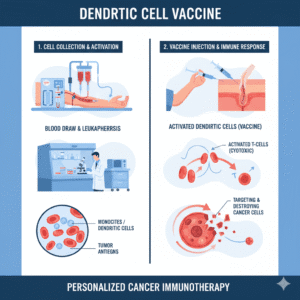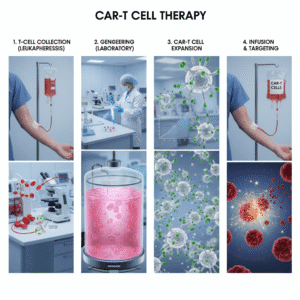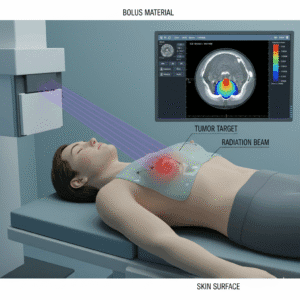
Radioembolization in HCC (SIRT)
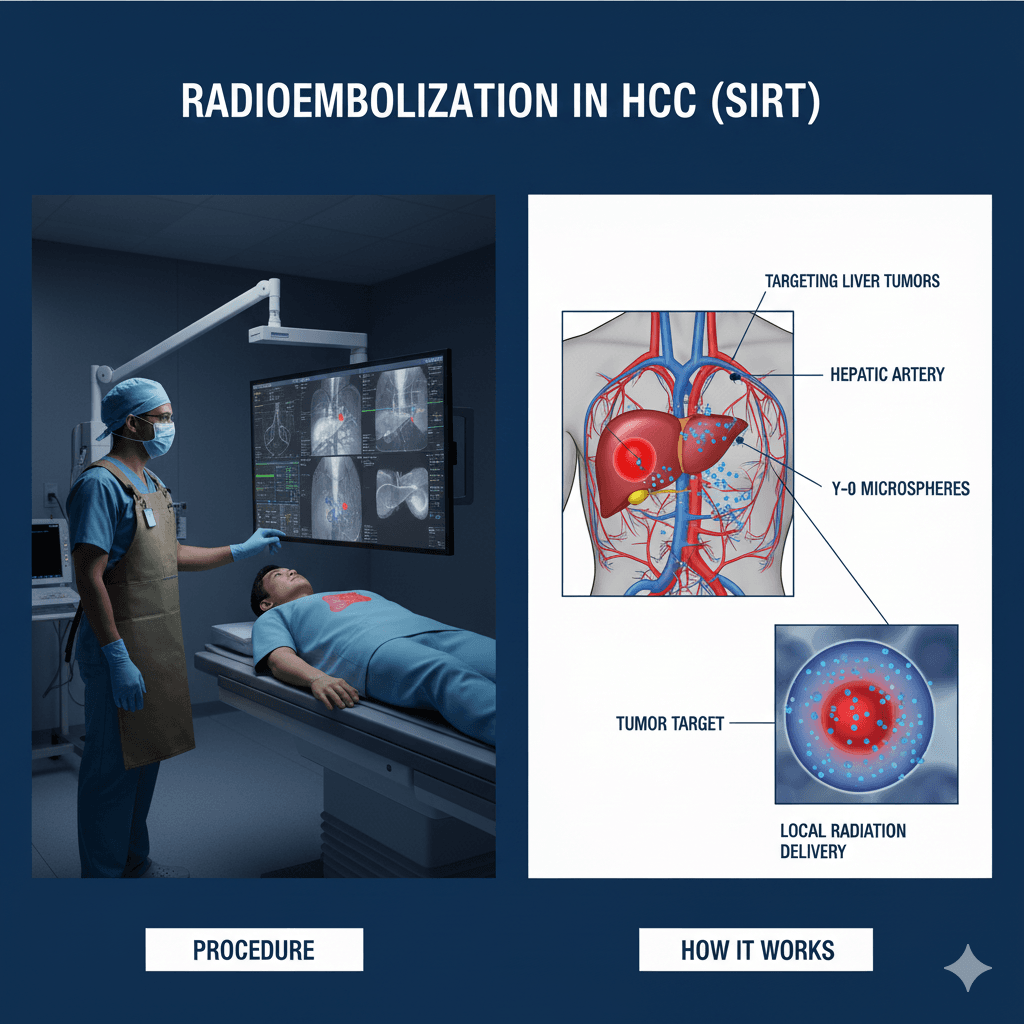
Q1: What is Selective Internal Radiation Therapy (SIRT) or Radioembolization?
A: Selective Internal Radiation Therapy (SIRT), also known as radioembolization, is a targeted cancer treatment that combines radiation therapy with embolization. It involves injecting tiny radioactive beads, called microspheres, directly into the blood vessels that supply a tumor, usually in the liver. The beads deliver a high dose of radiation to the tumor while minimizing exposure to surrounding healthy tissues.
Q2: How does SIRT work in treating cancer?
A: SIRT works by delivering radiation directly to the tumor through the bloodstream. The microspheres are injected into the hepatic artery, the main blood vessel supplying the liver. These radioactive beads lodge in the small blood vessels around the tumor, where they emit radiation that kills cancer cells. The radiation is highly localized, which allows for effective treatment of the tumor with minimal impact on the surrounding healthy liver tissue.
Q3: What types of cancer can be treated with SIRT?
A: SIRT is primarily used to treat liver cancers, including:
- Primary liver cancer (hepatocellular carcinoma): The most common type of liver cancer.
- Metastatic liver cancer: Cancers that have spread to the liver from other parts of the body, such as colorectal cancer.
SIRT is often considered when the tumor cannot be removed surgically or when other treatments, such as systemic chemotherapy or traditional radiation therapy, are not effective.
Q4: What are the benefits of SIRT?
A: The benefits of SIRT include:
- Targeted treatment: SIRT delivers high doses of radiation directly to the tumor, sparing healthy tissues.
- Minimally invasive: The procedure is done through a small incision, reducing recovery time compared to traditional surgery.
- Effective for inoperable tumors: SIRT can treat tumors that cannot be surgically removed, offering a treatment option for patients with limited choices.
- Combination with other treatments: SIRT can be used alongside other therapies, such as chemotherapy, to improve outcomes.
Q5: How is SIRT performed?
A: SIRT is performed as follows:
- Preparation: Before the procedure, imaging tests such as CT or MRI scans are done to map the blood vessels in the liver and plan the treatment. A small test dose of beads may be injected to ensure the beads go to the right place.
- Procedure: Under local anesthesia and sometimes sedation, a catheter (a thin tube) is inserted through an artery in the groin or wrist and guided to the hepatic artery in the liver. The radioactive microspheres are then injected through the catheter into the artery supplying the tumor.
- Aftercare: After the procedure, patients are monitored for a few hours and can usually go home the same day or the next day. Follow-up imaging is done to assess the effectiveness of the treatment.
Q6: What are the potential side effects of SIRT?
A: While SIRT is generally well-tolerated, there are some potential side effects, including:
- Fatigue: A common side effect that may last for a few weeks after the procedure.
- Nausea: Some patients may experience nausea, which can usually be managed with medication.
- Abdominal pain: Discomfort in the abdomen may occur, particularly in the first few days after treatment.
- Fever: A low-grade fever is possible after the procedure.
- Post-radioembolization syndrome: This includes symptoms like fatigue, fever, nausea, and abdominal pain, which are typically mild and temporary.
Serious side effects are rare but can include liver damage or radiation-induced injury to nearby organs. Your healthcare team will discuss the risks with you and monitor you closely after the procedure.
Q7: How do I know if SIRT is the right treatment for me?
A: Whether SIRT is suitable for you depends on several factors, including the size and location of your tumor, the overall function of your liver, and your general health. SIRT is often considered for patients who have inoperable liver tumors or who have not responded well to other treatments. Your oncologist will evaluate your specific situation and discuss whether SIRT is a good option for you.
Q8: What can I expect after SIRT treatment?
A: After SIRT, most patients experience some fatigue and mild discomfort, which usually subsides within a few days. You’ll have follow-up appointments and imaging tests to monitor the effectiveness of the treatment and to check for any side effects. It’s important to follow your healthcare provider’s instructions on managing symptoms and to report any unusual or severe side effects immediately.
If you have more questions about Selective Internal Radiation Therapy (SIRT) or are considering it as a treatment option, talk to your healthcare provider. They can provide detailed information and help you understand how SIRT might fit into your overall cancer treatment plan.
Related Post


CyberKnife
August 6, 2024
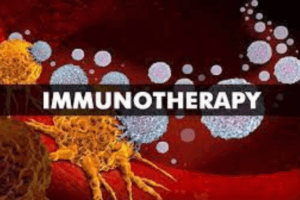
Immunotherapy
August 7, 2024

MRI Linac
August 7, 2024
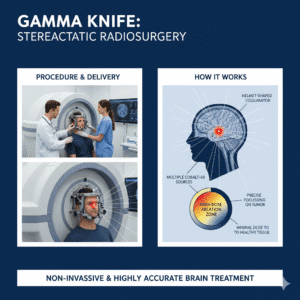
Gamma Knife
August 7, 2024
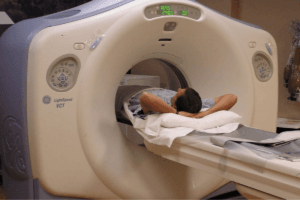
Cancer Screening
August 22, 2024
Gallery
Click below to book a clinic appointment
Ask More Questions Send Query On Email



